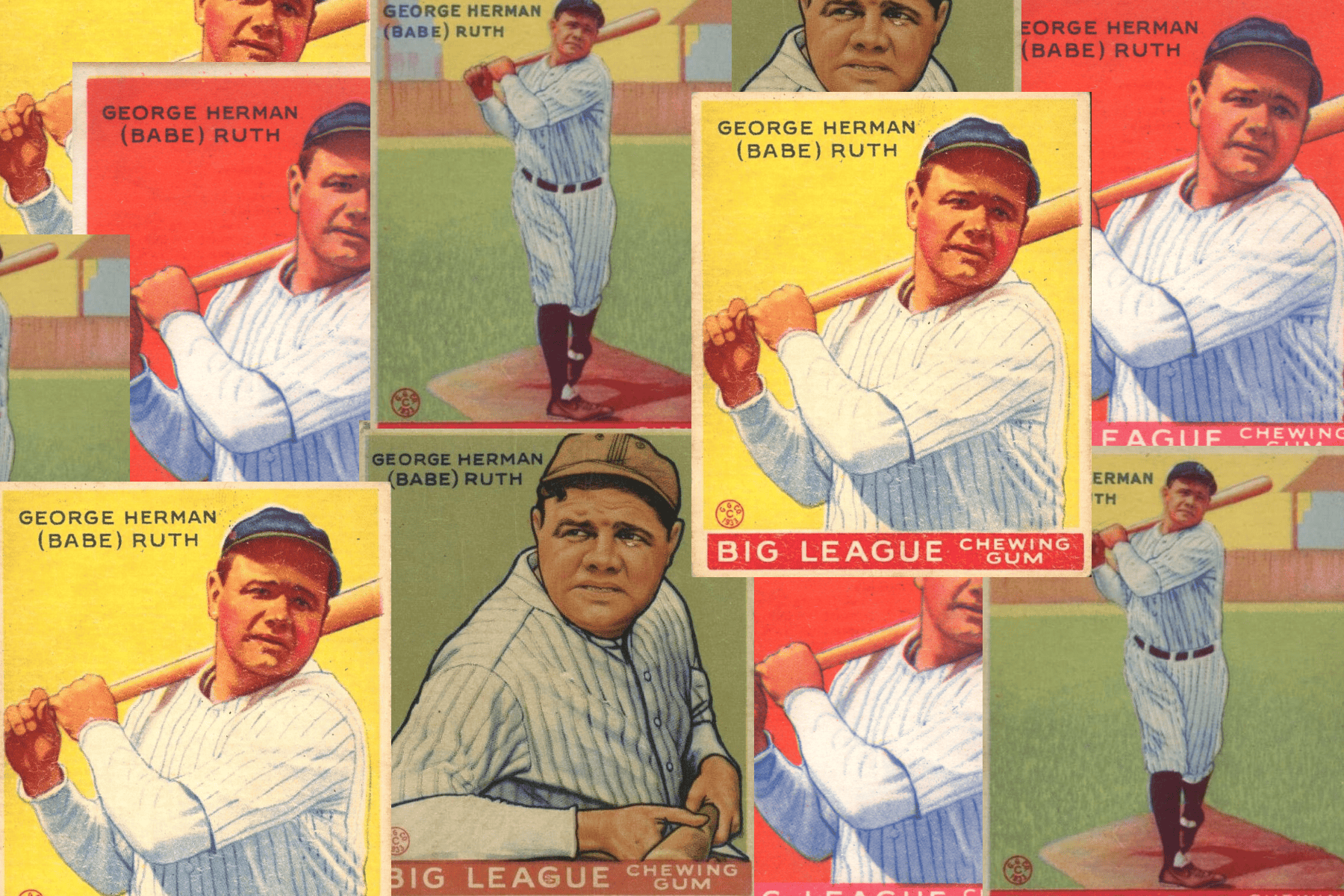For collectors of vintage baseball cards, few sets hold the same allure as the 1933 Goudey. This iconic release not only captured the golden age of the sport but also delivered a quartet of 1933 Goudey Babe Ruth cards that have become synonymous with baseball card collecting itself. Let’s take a deep dive into these legendary cards, exploring their variations, rarity, and the significance they hold within the hobby.
The Four 1933 Goudey Babe Ruth Cards
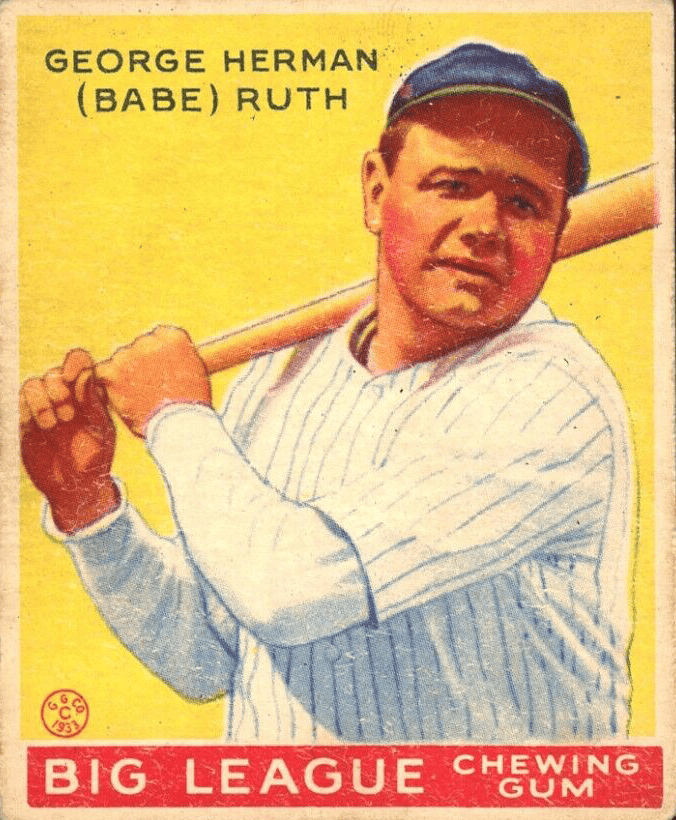
The 1933 Goudey set, produced by the Goudey Gum Company, featured 240 cards spotlighting Major League Baseball players. Among them were four distinct Babe Ruth cards, each showcasing the larger-than-life slugger in a slightly different pose.
Identifying the Four Cards
- #53 (Yellow Ruth): Arguably the most sought-after of the bunch, the “Yellow Ruth” depicts Babe in a classic batting stance, his bat held high. This card is particularly rare due to centering issues during the production process.
- #144 (Full Body Ruth): This card features a full-body image of Ruth in his Yankees uniform, making a throw. Interestingly, there’s a double-printed version of #144, with one variation exhibiting superior focus and clarity compared to the other.
- #149 (Red Ruth): Mirroring the pose of #53, the “Red Ruth” showcases a slightly different color scheme, with a reddish background instead of yellow.
- #181 (Green Ruth): This card presents a close-up image of Ruth in his Yankees cap, gazing intently towards the camera. The same photo used for #181 would also appear in the 1935 Goudey “4-in-1” set.
Rarity & Quirks
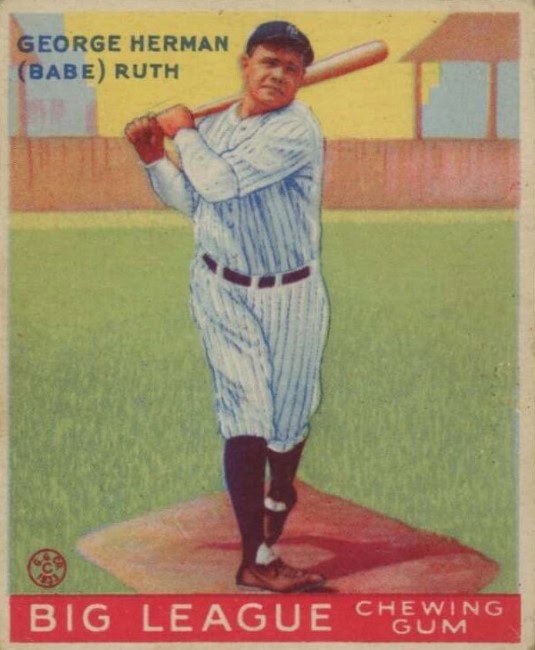
While all four 1933 Goudey Babe Ruth cards are prized possessions, the “Yellow Ruth” (#53) reigns supreme in terms of rarity and value. Factors like centering issues during production and the overall popularity of the card have driven its price into seven-figure values.
The double-printed #144 (“Full Body Ruth”) is more common than the #53 but can still fetch a significant sum, particularly a version with better clarity. #149 (“Red Ruth”) – which had a larger print run than #53 – and #181 (“Green Ruth”) tend to be the most affordable of the four, though their value can still climb depending on the card’s grading and overall condition.
Significance of the 1933 Goudey Set
The 1933 Goudey set holds immense significance within the hobby for several reasons. It was the first gum card set to feature Major League Baseball players, forever changing the landscape of sports card collecting. The set also introduced now-iconic card sizing and a focus on player statistics on the back, elements that remain staples in modern card design.
Beyond these innovations, the 1933 Goudey set captured a pivotal moment in baseball history. The game was transitioning from the dead-ball era to the live-ball era, with sluggers like Babe Ruth dominating the game. Owning a card from this set is a connection to this transformative period in baseball.
Babe Ruth’s Superstar Power
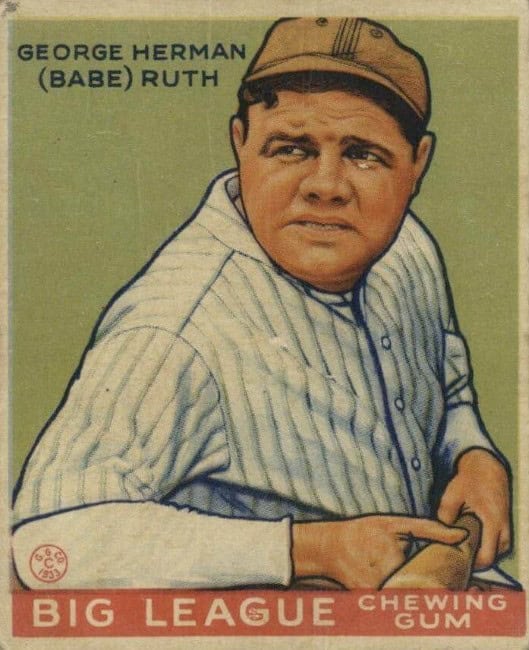
Babe Ruth was one of the first true superstar athletes of modern baseball. The National Baseball Hall of Fame aptly described him as “the first star of a world where virtually every citizen could share in common media experiences.” He was an amazing baseball player, but also a cultural icon, with his face and name plastered all over American life.
While Babe Ruth was nearing the end of his legendary career in 1933, he was still immensely popular and talented. At 38 years old, he slashed .301/.457/.660 with 46 home runs and 163 RBIs in 151 games. These numbers were enough to lead the Yankees to a World Series victory, further solidifying his legacy as one of the greatest players of all time.
Goudey smartly included Ruth four times in the set due to his popularity, which is nearly unheard of for modern baseball card sets (inserts notwithstanding). Collectors had options in what they pursued, and having multiple cards turned it into a pursuit that drove sales.
Long-Term Value of 1933 Goudey Babe Ruth
The allure of the 1933 Goudey Babe Ruth cards isn’t fading with time. As the hobby of baseball card collecting continues to evolve, these cards are likely to maintain their status as holy grails. Their finite population, coupled with their historical significance and association with Babe Ruth, ensures their value will likely continue to appreciate.
A “Yellow Ruth” #53 sold for $3.84 million in early 2021, one of the top-five selling cards of all-time (Ruth’s 1914 Baltimore News card is third, at a sale price of $6 million).
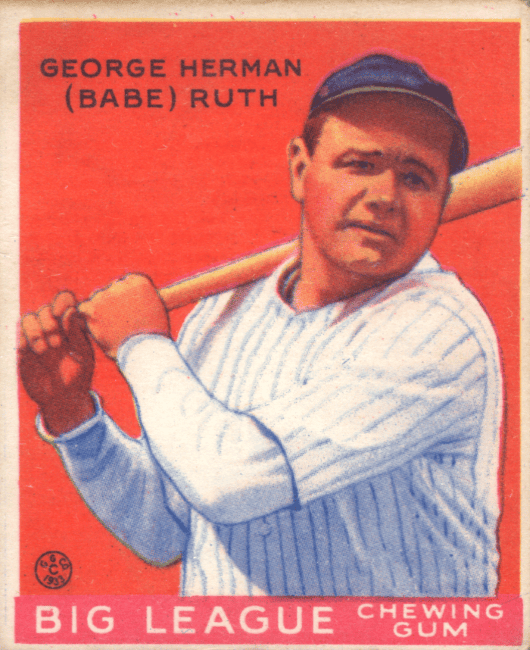
Given the immense value associated with these cards, especially the “Yellow Ruth” (#53), the importance of proper grading and authentication cannot be overstated. A well-graded card from a reputable company will not only ensure authenticity but also significantly enhance its value.
PSA has never given a gem-mint, PSA 10 grade to a “Yellow Ruth.” The next highest grade – PSA 9 – has a population of one (that’s the above-mentioned million-dollar sale). Grades of the card are most commonly PSA 4 and below, with many collectors choosing to simply authenticate the card without a grade.
Among the other Ruths in the set, the “Green Ruth” has recorded a single PSA 10, which hasn’t yet been sold, and a PSA 9 that sold for over a million dollars. The “Red Ruth” has sold for over $500,000 with a PSA 8 grade, and the “Full Body Ruth” has reached a similar price point for a PSA 9.
Saying that, most collectors will encounter these cards at much lower grades and can expect to pay around $20,000-$40,000 for a mid-grade version of any of the four cards.
Conclusion
The 1933 Goudey Babe Ruth cards stand as a testament to the enduring legacy of Babe Ruth and the golden age of baseball. From their historical significance to their captivating imagery, these cards continue to capture the hearts and imaginations of collectors worldwide. Whether you dream of owning one of these legendary cards yourself or simply appreciate their place in baseball history, the 1933 Goudey Babe Ruth cards serve as a timeless reminder of the magic that baseball can bring.
